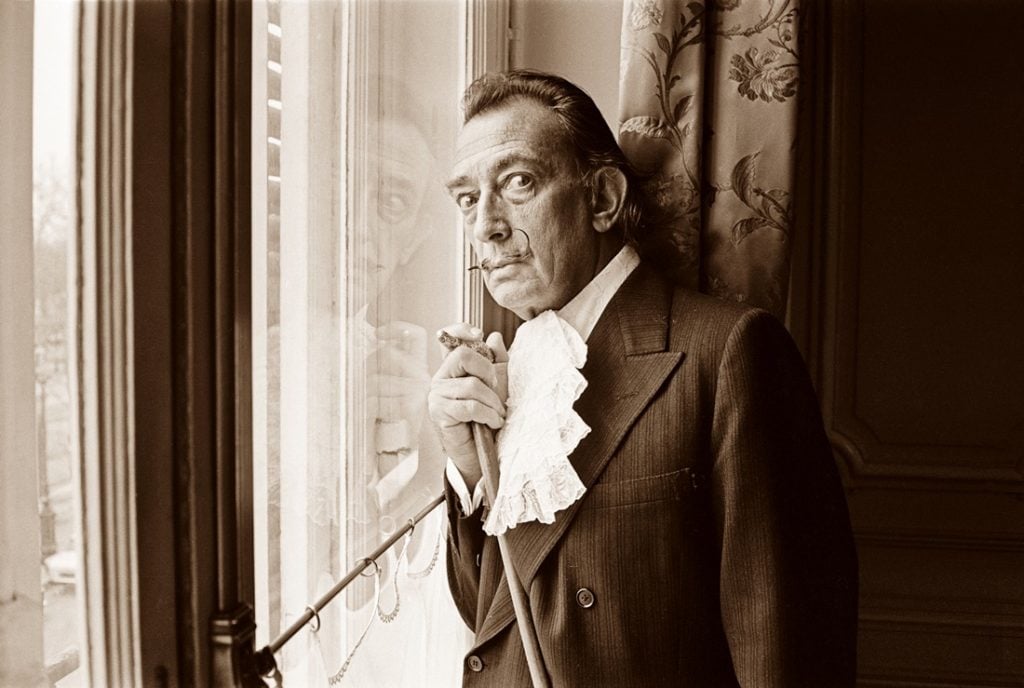Now on Artnet Auctions: See Modernism Electrified in Our 20th-Century Art Sale


Artnet Auctions

The canonical arc of 20th-century Western art history follows a clear bent: Impressionist iconography fed Cubism, then leaned into Abstraction and eventually back into Neo-Expressionism. Until recently, it was unlikely for collectors and art historians to see these categories grouped as one, whether at auction or in a museum. For decades, Impressionism and Modernism were siloed from the return to figuration in the latter decades of the century.
Yet recently this categorization is beginning to dissolve. In the market realm, Artnet Auctions is leading the way towards a new selling category that looks at the 20th century as a whole, bridging movements to show a fuller narrative. Our latest 20th-Century Art sale, live now through March 18th, is closely curated for connectivity in color, concept, and line.
Read on to find out how its synthesis emerges broadly in three groupings of works selected by Solomon Bass, Artnet Auction’s Contemporary Art Junior Specialist.
Childe Hassam’s Peaches, Long Island and Glass from 1933 shows the chromatic genesis of a chronological journey. Although he was living in East Hampton during his mature period, he looked back toward his own time in Paris amidst the worlds of renowned art dealers Durand-Ruel and Georges Petit for inspiration. While in this city of light decades prior, Hassam rented an apartment that Renoir once occupied, and absorbed Manet, Degas, Sisley, and Pissarro’s tonal touches. In their spirit, Hassam brought a touch of Baudelaire’s urban dreaming to Long Island in the last years of his life.
Hassam’s work plays well next to Marc Chagall’s watercolor, gouache and pastel still life executed 20 years later. Like Hassam, Chagall also lived in France, settling in Vence during the 1950s. His work at the time echoed the joyous surfaces of earlier styles, which arguably generated new hope amidst devastation lingering from the war. Roses was executed only one year after his marriage to Valentina “Vava” Brodsky, his second wife. It’s clear that he experienced a newfound sense of peace and security at this point in his life, communicated in the gauze-like delicacy of his petals and curving pastel marks rendered in the work. Reflecting the ease and sentimental potency of Fauvism and Henri Matisse’s bonheur de vivre standard, his composition balances the present tragedy of post-war Europe through past euphoria in art history and his own personal life.
Both Óscar Domínguez’s 1944 Teléfono y Revolver and Salvador Dalí’s epic set of 100 prints depicting Dante’s Divine Comedy appear as transformative kaleidoscopes of nonlinear continuity. Conceived when the war was nearing its finish, Domínguez’s oil-on-canvas of jagged teeth growing up through grass translates the essence of Surrealism’s twisting of corporeal existence and is a clear follow-up to André Bréton’s 1924 definition of absolute existence as the absence of control. In this work, Domínguez explores motifs of unmasking inner dreams.
Illustrating a literary voyage in and out of fire, Dalí’s complete Divine Comedy portfolio similarly psychoanalytically explores fantastical imagery in his climactic breaking down of Dante and Virgil’s journey through blazing rings of hell, filled with melted bodies and shimmering particles. It also signifies the artist’s perseverance through a project despite difficult circumstances. Midway through the completion of the portfolio project—which had been commissioned by the Italian government in honor of Dante’s 700th birthday—the government relieved him of his duties due to public outcry that Dalí, a Spaniard, had been chosen for the project rather than an Italian. Still, Dalí saw the ethical story through to pictorial completion.
This final grouping touches on the nuances of female strength. Pablo Picasso’s 1948 lithograph La Femme Au Fauteuil No. 2 (d’après la vert), for instance, depicts his famous lover Françoise Gilot seated in a chair, with paisley shapes mixed into her arms. The composition merges the enduring angular simplicity of synthetic Cubism with whispers of his idyllically slumberous portrait of Marie-Thérèse Walter from 1932. Diane Arbus’s 1964 gelatin silver print Ruth St. Denis, Cal. on the other hand captures American modern dance legend, Ruth St. Dennis. Raising her arms in a gesture that appears almost religious, she wears a dramatic cape on top of an angelic white garment. The image enshrines St. Dennis and her contribution to choreography that lasted far beyond the close of her Los Angeles dance school in 1931.
The nexus of all three of these groupings may be best expressed by Roy Lichtenstein’s 1989 Nude lithograph, a wax type, woodcut, and screenprint in colors on Saunders Waterford paper. In this work, the exuberant brushstrokes of 1950s Abstract Expressionism loosely form an icon of 1960s Pop: what Tom Wesselmann called the “great American nude.”
Whether their muses were personal, professional, art historical, or more generally cultural, one thing that the artists in our 20th-Century Art sale each have in common is that they responded to the unique nature of their circumstances, unlimited by a categry. Explore more before the sale closes on March 18.